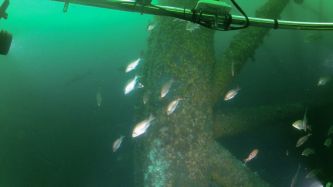http://www.houstonchronicle.com/business/energy/conferences/article/New-rules-coming-for-retiring-offshore-oil-5458587.php
May 6, 2014 | Updated: May 6, 2014 11:06pm
by Jennifer A. Dlouhy
Tommy Beaudreau says new rules are coming on the decommissioning of old offshore oil infrastructure.
New regulations governing the decommissioning of old offshore oil infrastructure are on the horizon, a top Obama administration official said Tuesday. The Bureau of Ocean Energy Management will begin tackling the issue this summer, said Tommy Beaudreau, the former director of the agency. Although Beaudreau did not give specifics during a presentation at the Offshore Technology Conference, the coming regulations are expected to deal with concerns that existing bonding requirements for oil and gas companies are insufficient in an era of ultradeep exploration far from the coast.
“This will be an open, transparent process on how we meet these challenges around aging infrastructure and decommissioning,” said Beaudreau, who is now chief of staff to Interior Secretary Sally Jewell. The issue is a live one as some of the oldest deep-water wells in the Gulf of Mexico reach the end of their lives and companies look to dismantle the operations. Randall Luthi, the head of the National Ocean Industries Association and a former federal drilling regulator, said any changes should embrace rigs-to-reefs programs designed to allow old structures to have new lives as a habitat for marine life.
Norwegian company plans underwater ‘factories’ by Ryan Holeywell
Statoil wants to build huge underwater “factories” by 2020 that would sit on the seabed as they produce and process natural gas offshore.
The effort would be the culmination of work the Norwegian oil and gas company has pursued since 1986, when it drilled its first subsea wells, said Ola Anders Skauby, Statoil’s vice president of communication, technology, projects and drilling.
Statoil’s 500 undersea wells now account for half of its energy production, and its plan is to put almost every component needed for that work underwater in some locations, in part to insulate personnel and technology from difficult conditions. The company says subsea factories will be vital in parts of the world that are farthest from shore in deep, cold, harsh environments. One key to making them work is development of giant undersea gas compressors to boost production. Statoil is set to deploy a pair of those devices next year off the coast of Norway at a site called Åsgard.
“It’s as large as a soccer stadium – something you put on the seafloor,” Skauby told the Houston Chronicle. Compressors typically are placed on surface facilities. Building and installing the two compressors will cost $2.7 billion, but Statoil projects they will increase production in the Åsgard fields by at least 282 million barrels of oil equivalent. Subsea factories also will include an electrical power source and machinery to separate oil, gas and water. Statoil already operates a commercial separator off the coast of Norway. “We have that technology today,” Skauby said.
Still, subsea is costly and only will take hold where the economics make sense, he said.
The Black Elk Energy platform is submerged at South Timbalier Block 185 in the Gulf of Mexico. OceanGate, a Seattle-based provider of deep-water submersible vessels, has released a new crop of underwater images from the federal Rigs to Reefs program, showing sea creatures swimming among the steel legs of an old Black Elk Energy platform. The manned submersibles typically are contracted for deep-water research and filming of shipwrecks and underwater life. But OceanGate made its first dive to observe an oil facility in the Gulf of Mexico earlier this year.
Special thanks to Richard Charter

